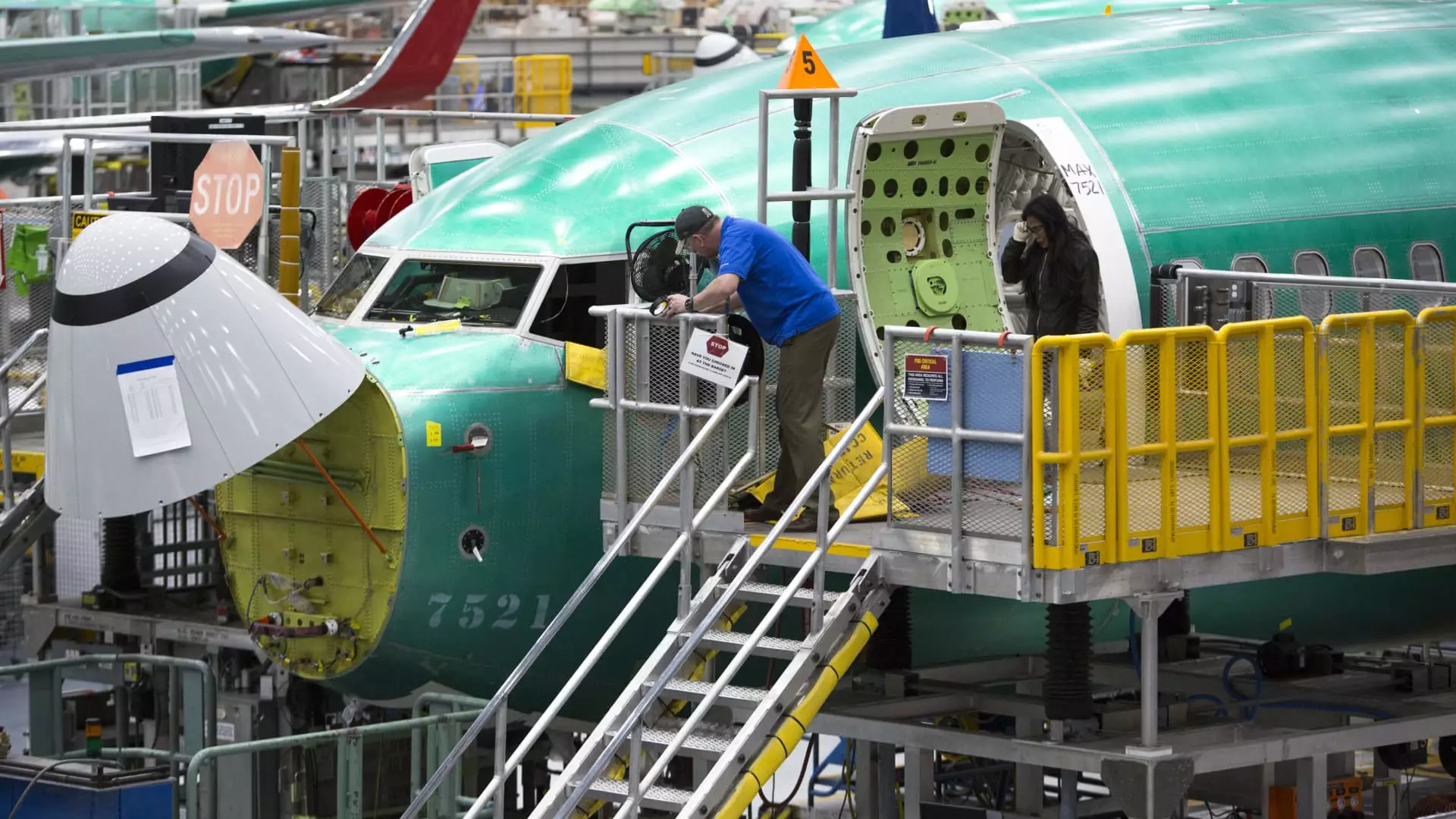Boeing workers are at a critical juncture as they prepare to vote on a new labor contract that could have significant implications for both their future and the company’s operational stability. Scheduled for Thursday, this vote represents a moment of tension, with the possibility of striking looming large over the proceedings. The tension arises from heightened production demands coinciding with potential labor unrest, presenting a confluence of challenges for a company still grappling with its past missteps.
The tentative agreement reached between Boeing and the International Association of Machinists and Aerospace Workers (IAM) represents a substantial shift in labor relations. The proposal includes a 25% wage increase, as well as enhanced healthcare and retirement benefits, marking an attempt to address the grievances voiced by the workforce. Additionally, Boeing has committed to continuing aircraft production in the Seattle area, a decision that symbolizes its investment in regional commitment and job security.
CEO Kelly Ortberg, who has only recently taken the helm at Boeing, faces the daunting task of guiding the company through this critical period. His experience will be tested, as the staff vote serves not only as a test of the contract but also as a barometer of employee sentiment towards management. In a staff communication, Ortberg acknowledged the fervor surrounding the proposed agreement and encouraged workers to consider the long-term ramifications of their choices. He seems to be presenting a narrative of unity, urging workers to look beyond historical grievances in order to foster a collaborative future.
However, the challenge lies in the inherent distrust that often accompanies labor negotiations, particularly following a series of quality control and safety lapses at Boeing. Ortberg’s framing of the situation as one of shared future and recovery is an ambitious approach; yet, it raises questions about whether workers will feel secure enough to accept a deal that they perceive as insufficient given their prior demands.
The IAM, representing nearly 33,000 workers primarily in the Seattle area and Oregon, is acutely aware of the stakes involved. While the proposed increase falls short of the union’s initial demand for a 40% increase, it still aligns with broader trends seen across various industries, including recent negotiations in the automotive sector. The IAM’s decision to recommend acceptance highlights a cautious strategy; they understand the unpredictable nature of labor disputes and the potential ramifications of prolonged strikes. Union leaders are clear: they believe the best outcome has been achieved through bargaining, but ultimate power rests with the members.
Jon Holden, IAM District 751 President, emphasized the choice before the workers in his communications, underscoring the union’s role as a supporter regardless of the final decision. His remarks resonate with the underlying tension of collective bargaining—while the union advocates for its members’ best financial interests, the unpredictability of a strike could destabilize not just individual workers, but the broader recovery trajectory of Boeing.
The Potential for Strike Action
Should the workers reject the contract, the implications of a potential strike are grave. If two-thirds of the voters opt for strike action, it could initiate a work stoppage almost immediately. The gravity of this choice is amplified by Ortberg’s acknowledgment of Boeing’s troubled history, hinting at the precarious balance the company must maintain to earn back trust within its workforce and among its customers.
It’s crucial to recognize that, according to union statements, if the voting does not meet the threshold for a strike, the contract will automatically go into effect—a safeguard meant to protect the interests of the company amid worker discontent. This dual-path scenario underlines the tension within labor negotiations and the complexities of achieving consensus between workers demanding fair compensation and a company struggling to rebound from previous errors.
Conclusion: Looking Towards the Future
As the polls close at 6 p.m. PT, the outcome will not just shape the immediate future for Boeing’s workforce, but it will also set a tone for labor relations across industries moving forward. Whether or not the proposed agreement passes, the results will have lasting implications for Boeing’s trajectory, employee morale, and the future of labor negotiations in challenging economic landscapes. The choice to accept or reject a deal like this could either pave the way for a strengthened relationship between Boeing and its workforce or set the stage for renewed unrest, a dynamic that will require careful management from both leadership and union representatives alike.

